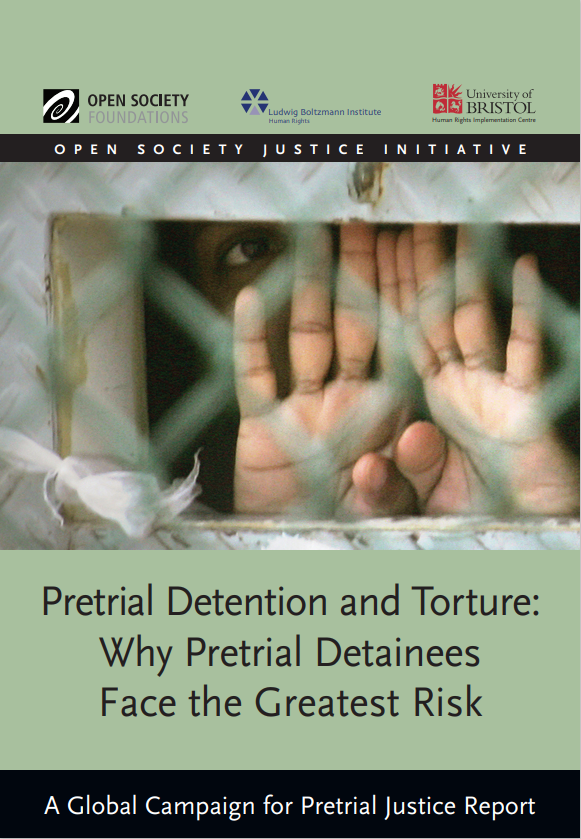Pretrial Detention and Torture. Why Pretrial Detainees Face the Greatest Risk.
Despite the absolute ban on torture and other forms of cruel, inhuman or degrading treatment or punishment under international law, forms of physical torture such as beatings, electroshock, asphyxiation, and stress positions—as well as psychological forms of torture including death threats and threats against family members—continue to be routinely practiced throughout the world. Of the nearly ten million people detained globally, those held in pretrial detention face the most significant risk of torture and other forms of ill-treatment. Pretrial detainees are particularly at risk of being abused because the incentives and opportunities for torture are most prevalent during the investigation stage of the criminal justice process. Pretrial detainees are entirely in the power of detaining authorities, who often perceive torture and other forms of ill-treatment as the easiest and fastest way to obtain information or extract a confession. The practice of torture during pretrial detention is facilitated by a range of systemic problems, including: criminal justice systems centered on confessions and underpinned by corruption; lack of access to legal assistance while in pretrial detention; arbitrary arrests, primarily of poor people without the resources to defend themselves; poorly trained and paid law enforcement officials who do not have access to modern criminal investigation tools; and the popularization of a “tough on crime” approach to criminal justice that exaggerates its benefits and understates its costs. One of the most effective ways to prevent torture is through early access to legal aid, combined with a system of regular, unannounced visits to places of detention. Yet, of all formal detention facilities, pretrial detention centers and police stations are typically the most difficult to gain access to, and information on people held in pretrial detention is often limited or nonexistent. In many cases, authorities do not make public data about their pretrial detention populations, and in other cases authorities fail to accurately track pretrial detainees. This lack of transparency perpetuates the problem of torture, which continues to occur with impunity in many states throughout the world. As former Special Rapporteur on Torture Sir Nigel Rodley put it: [T]here needs to be a radical transformation of assumptions in international society about the nature of deprivation of liberty. The basic paradigm, taken for granted over at least a century, is that prisons, police stations and the like are closed and secret places, with activities inside hidden from public view. The international standards referred to are conceived of as often unwelcome exceptions to the general norm of opacity, merely the occasional ray of light piercing the pervasive darkness. What is needed is to replace the paradigm of opacity by one of transparency. The assumption should be one of open access to all places of deprivation of liberty. Of course, there will have to be regulations to safeguard the security of the institution and individuals within it, and measures to safeguard their privacy and dignity. But those regulations and measures will be the exception, having to be justified as such; the rule will be openness. This paper „Pretrial Detention and Torture“ highlights the risk of abuse faced by pretrial detainees and identifies some of the systemic factors that perpetuate torture and other ill-treatment. Research referenced in this paper is largely drawn from the fact-finding missions of former UN Special Rapporteur on Torture Manfred Nowak and his team, as well as a review of reports by the European Committee for the Prevention of Torture, other relevant UN treaty bodies, and non-governmental organizations.
